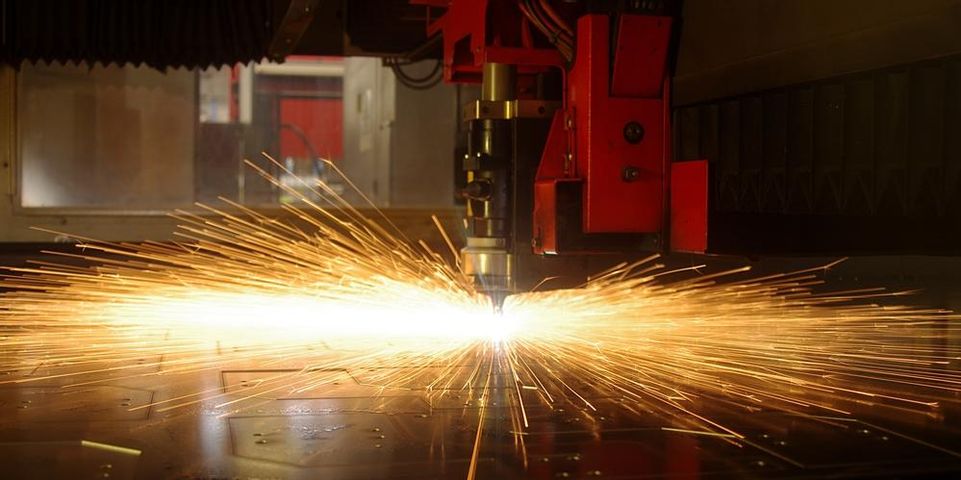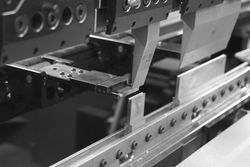
Sheet metal’s versatility makes it the perfect solution for many different projects. But although you’ve undoubtedly encountered finished products of the sheet metal fabrication procedure, understanding the steps needed to get there is both interesting and insightful into what can be created
The Sheet Metal Fabrication Procedure
1. Cutting
The first step in the sheet metal fabrication process is cutting the metal down to a specific shape and size. For larger sheets of metal, a shearing machine may be used to trim the piece down into the more manageable size. For smaller and more detailed shapes, lasers can be used to make intricate cuts at tighter angles.
Another cutting option is called punching. This method makes a small, precise series of holes in a sheet of metal to achieve the desired shape. The accuracy of both lasers and punching typically produce results that don’t require a second pass. Shearing, on the other hand, may need more work to prepare the metal for the second step.
2. Bending
 Bending of sheet metal is usually done with a press brake. After being placed over a V-shaped gap, the machine presses down into the sheet, causing the sides of the metal to bend upward.
Bending of sheet metal is usually done with a press brake. After being placed over a V-shaped gap, the machine presses down into the sheet, causing the sides of the metal to bend upward.
This step of the sheet metal fabrication process carries several risks. If the metal isn’t bent accurately and firmly enough, it can experience springback—a return to its original shape. This can be mitigated by over-bending, but only a skilled press brake operator can achieve a bend that holds shape this way. Also, the grain of the metal can affect the way they bend, and cracking can occur if the metal heats up while in the press brake.
3. Assembly
After cutting and bending various pieces into shape, they are held together by clamps and joined by welding. Tack welds—small, temporary welds—are used to hold each piece in place before the operator makes permanent welds. Depending on the type of project, other means of assembly may be used such as rivets or screws.
4. Finishing
Once the pieces have been joined, various methods are used to clean up the project. Smoothing welds, polishing, painting, and coating are all common procedures during this step. The purpose of these tasks is typically cosmetic or to provide a form of corrosion protection.
When all of these steps are completed by skilled metalworkers, the results can be of the highest quality. Whether for roofing or custom purposes, sheet metal has many applications thanks to the flexibility of the fabrication process.
3-D Sheetmetal has been providing Honolulu, HI, with custom metal work for nearly a decade. From roofing to custom projects, the company’s dedicated team takes pride in delivering personalized and knowledgeable customer service with every client. For more information, call (808) 842-0110 or visit the website.
About the Business
Have a question? Ask the experts!
Send your question

